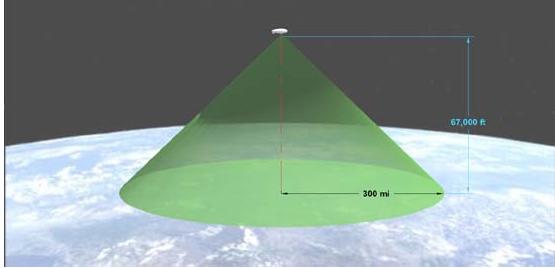SPYING is a sophisticated and expensive business—and gathering military intelligence using unmanned aircraft can be prohibitively so. Predator and Global Hawk, two types of American drone frequently flown in Afghanistan and Iraq, cost around $5,000 and $26,500 an hour respectively to operate. The aircraft themselves cost between $4.5m and $35m each, and the remote-sensing equipment they carry can more than double the price. Which is why less elegant but far cheaper balloons are now being used instead.Makes you wonder if anyone ever thought about putting a "ISR Blimp Kit" next to the FireScout on the back end of a LCS?
Such blimps can keep surveillance and ordnance-guiding equipment aloft for a few hundred dollars an hour. They cost hundreds of thousands, not millions, of dollars. And they can stay in the air for more than a week, whereas most drones fly for no more than 30 hours at a time. They are also easy to deploy, because no airfield is needed. A blimp can be stored in the back of a jeep, driven to a suitable location, launched in a couple of hours and winched down again even faster.
Persistent ISR; you've got it.
Remember the SECDEF quote from yesterday?
At least 20 countries use blimps—both global military powers, such as America, Britain and France, and smaller regional ones, including Ireland, Pakistan, Poland and the United Arab Emirates. Many are employed in Iraq. In November 2008 Aerostar International of Sioux Falls, South Dakota, began filling a $1.8m order for 36 blimps to be deployed by the American armed forces in Iraq. But Afghanistan may prove a bigger market. That is because it is difficult to pick up satellite signals in the valleys of that mountainous country. As a result blimps, adjusted to hover at appropriate heights, are often used to relay data to and from satellites.Nice.
As politicians around the world seek to cut public spending, the attractions of blimps are growing. In January America’s defence secretary, Robert Gates, told the Senate’s armed-services committee that the Department of Defence would pursue greater quantities of “75% solutions” that could be realised in weeks or months instead of “99% exquisite systems” that take more than a decade to develop. Barry Watts, an analyst at the Centre for Strategic and Budgetary Assessments, a think-tank in Washington, DC, says America’s air force has been criticised for not providing enough aerial data to “insatiable” ground forces. Blimps, Mr Watts reckons, will help them sate that appetite.
Wouldn't mind a larger version for BAMS either .... but AeroStar can't fight the lobby efforts of Northrop-Grumman I bet.

No comments:
Post a Comment